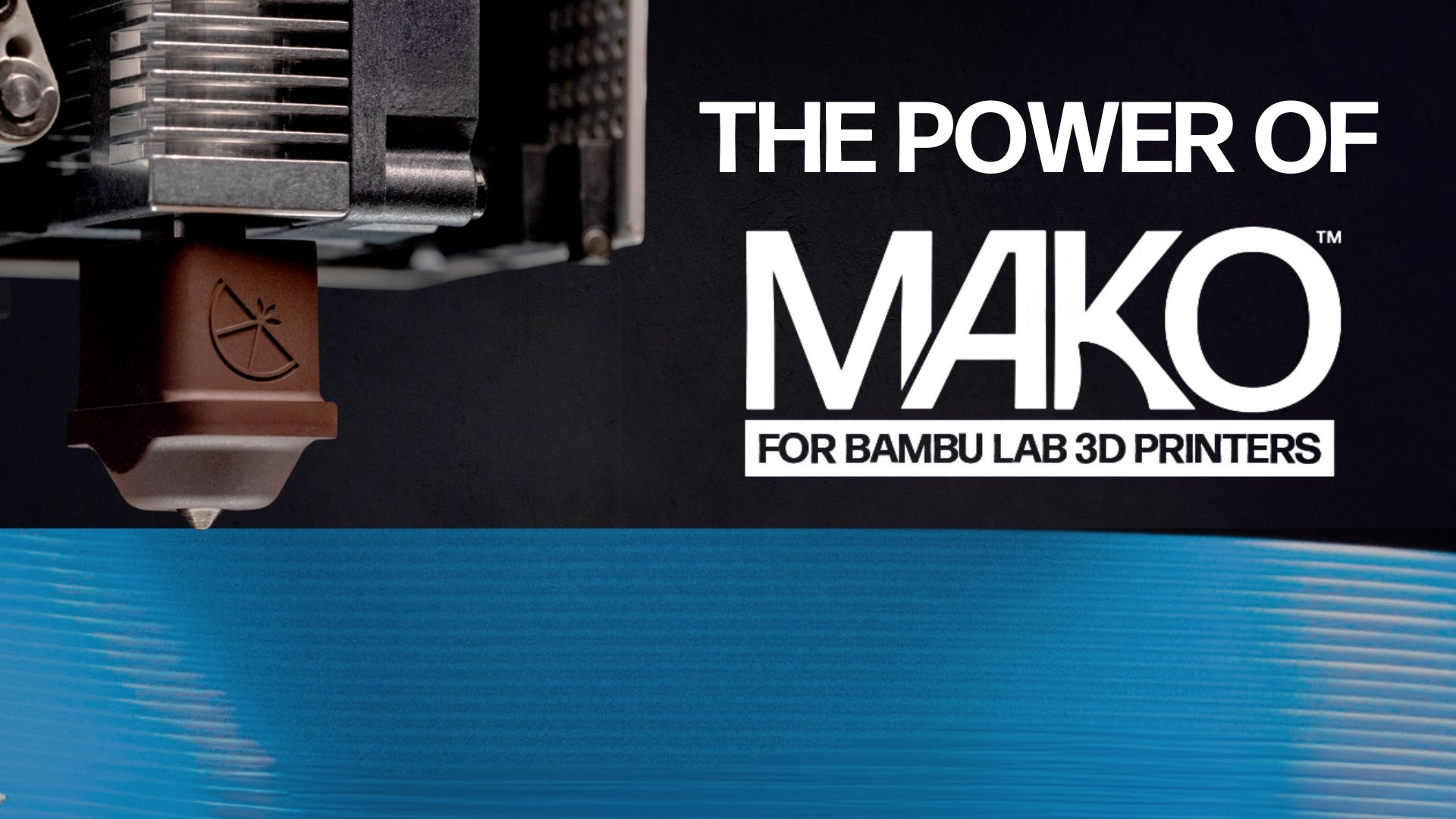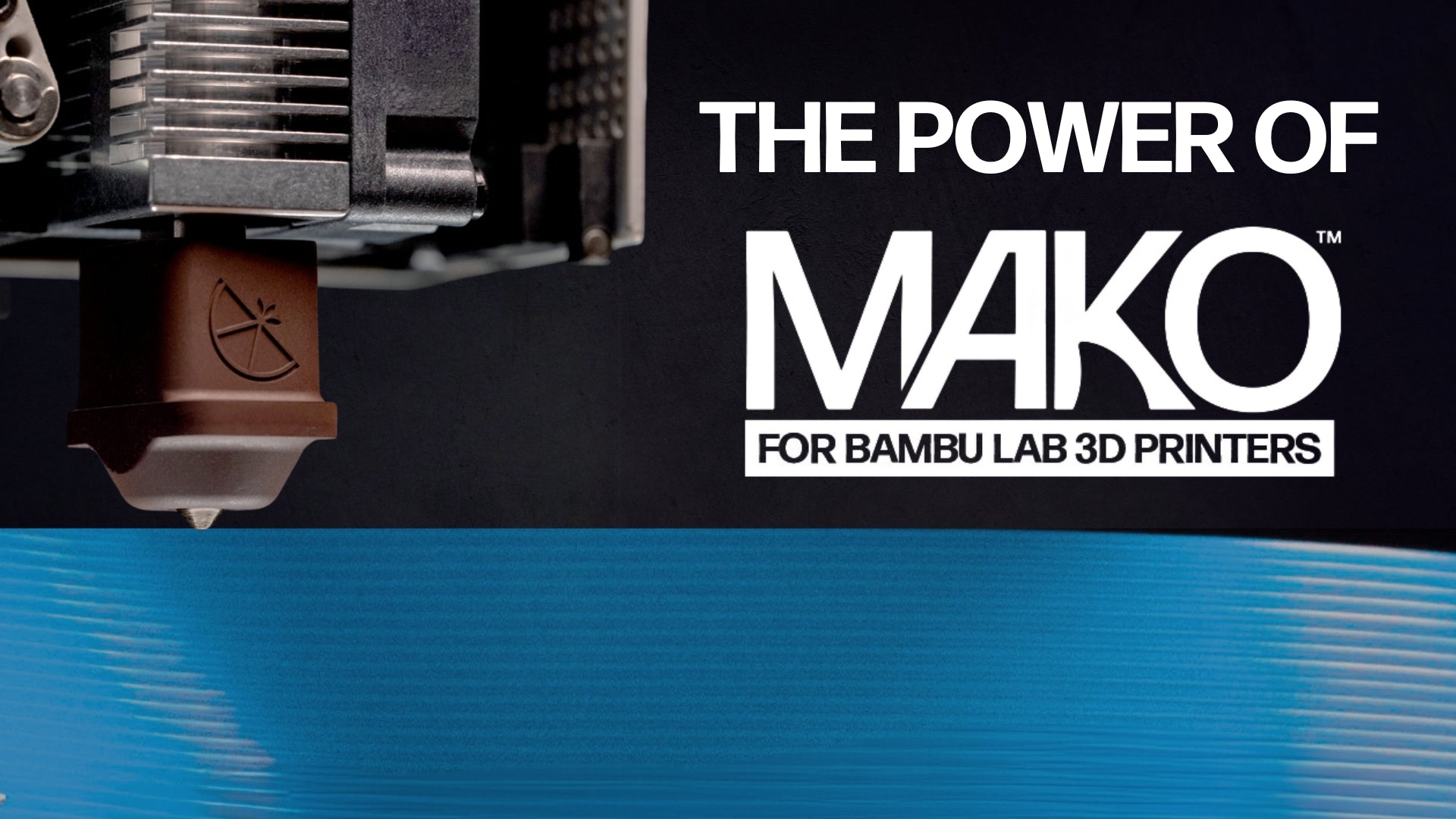
Mako Hotend Flow Rate: High-Speed 3D Printing
Introduction
When we set out to design the Mako Hotend for the Bambu Lab series printers, we aimed to push the limits of performance, reliability, and nozzle interchangeability. At the heart of this mission lies one crucial measurement: volumetric flow rate. In the world of Fused Deposition Modeling (FDM), this metric defines how much material your hotend can extrude in a set amount of time, directly affecting print speeds and the quality of the final product.
Check out this blog post on Understanding Hotend Flow Rate for a thorough breakdown. It explains the relationship between flow rate and other variables like filament material, nozzle size, and print settings. Understanding the volumetric flow rate of a hotend helps users maximize print efficiency without compromising the quality of the final part.
At Slice Engineering, we calculate the average volumetric flow rate by dividing the total volume of filament printed by the time required to finish the print. We measure this in cubic millimeters per second (mm3/s). For example, if 100 mm3 of filament is extruded in 10 seconds, the flow rate is 10 mm3/s. The formula is:

Testing the Mako Hotend for Bambu Lab Printers
Our testing procedures utilized Bambu Lab printers (X1C, X1E, P1S, P1P), Bambu Lab filaments such as PLA, ABS, and PETG HF (with more materials to come), and GammaMaster FIN nozzles. These tests allowed us to determine the maximum practical volumetric flow rates for each material across different nozzle diameters. The specific model used for testing is shown in the image below and linked for download at the end of this post.

The model is printed in Vase mode to have one continuous extrusion to eliminate the effects retractions and travel moves can have on the flow rate measurement. For example, the temperature of the hotend doesn't have a chance to "recover" heat.
This model covers the majority of the bed to make it easier to identify regions where the hotend cannot maintain the requested flow rate. It also maximizes the amount of time the printer is printing at the requested print speed.
The layer height is 50% of the nozzle diameter and the layer width is 125% of the nozzle diameter. These values were chosen to represent the typical printing parameters that Bambu Lab users are familiar with.
Test Results
Below, you'll find the initial flow rate data for these filaments using the Mako Hotend and GammaMaster FIN Nozzles. These are initial flow rate results, which will be updated as testing continues:
| Nozzle Diameter (mm) | Material | Hotend Temperature (°C) | Volumetric Flow Rate (mm3/s) |
|---|---|---|---|
| 0.4 | PLA | 220 | 25 |
| ABS | 270 | 32 | |
| PETG HF | 245 | 29 | |
| TPU-HF | 230 | 24 | |
| PC | 270 | 31 | |
| 0.6 | PLA | 220 | 40 |
| ABS | 270 | 42 | |
| PETG HF | 245 | 39 | |
| TPU-HF | 230 | 43 | |
| PC | 270 | 27 | |
| 0.8 | PLA | 220 | 40 |
| ABS | 270 | 32 | |
| PETG HF | 245 | 36 | |
| TPU-HF | 230 | 43 | |
| PC | 270 | 26 |
These results highlight the Mako hotend’s ability to handle faster print speeds compared to stock. As testing continues, with more materials and nozzles, updated results will be shown in our white paper.
How We Measure Flow Rate
For Mako, our testing process involved incrementally increasing print speeds while carefully monitoring for defects such as under-extrusion. This approach helps ensure that we are capturing the maximum practical volumetric flow rate without sacrificing print quality.



You can read more about the specific procedures in the blog post here. The maximum flow rates are highly dependent on many variables, including:
- Nozzle Size: In general, larger nozzles (e.g., 0.6 mm, 0.8 mm) allow more material to pass through, leading to higher flow rates.
- Material Properties: Each material has its own characteristics. For example, while PLA and TPU-HF tend to exhibit higher flow rates due to their lower melting points, materials like ABS and PETG HF require more heat, resulting in lower overall flow rates.
- Heat Management: The Mako Hotend features an extended melt zone and enhanced heat transfer to help maintain a consistent temperature, reducing the chances of under-extrusion or other flow-related defects.
Conclusion
The Mako Hotend was designed to meet the needs of advanced users and prosumers looking to push their Bambu Lab printers to new limits. With flow rates up to 60% faster than stock, Mako allows for quicker prints and better overall performance. As we continue testing and pushing the envelope of what's possible, we will update our live white paper with the latest findings to keep you informed.
Stay tuned for more updates as we explore new materials and further optimize the Mako Hotend’s capabilities!
Recent Posts





